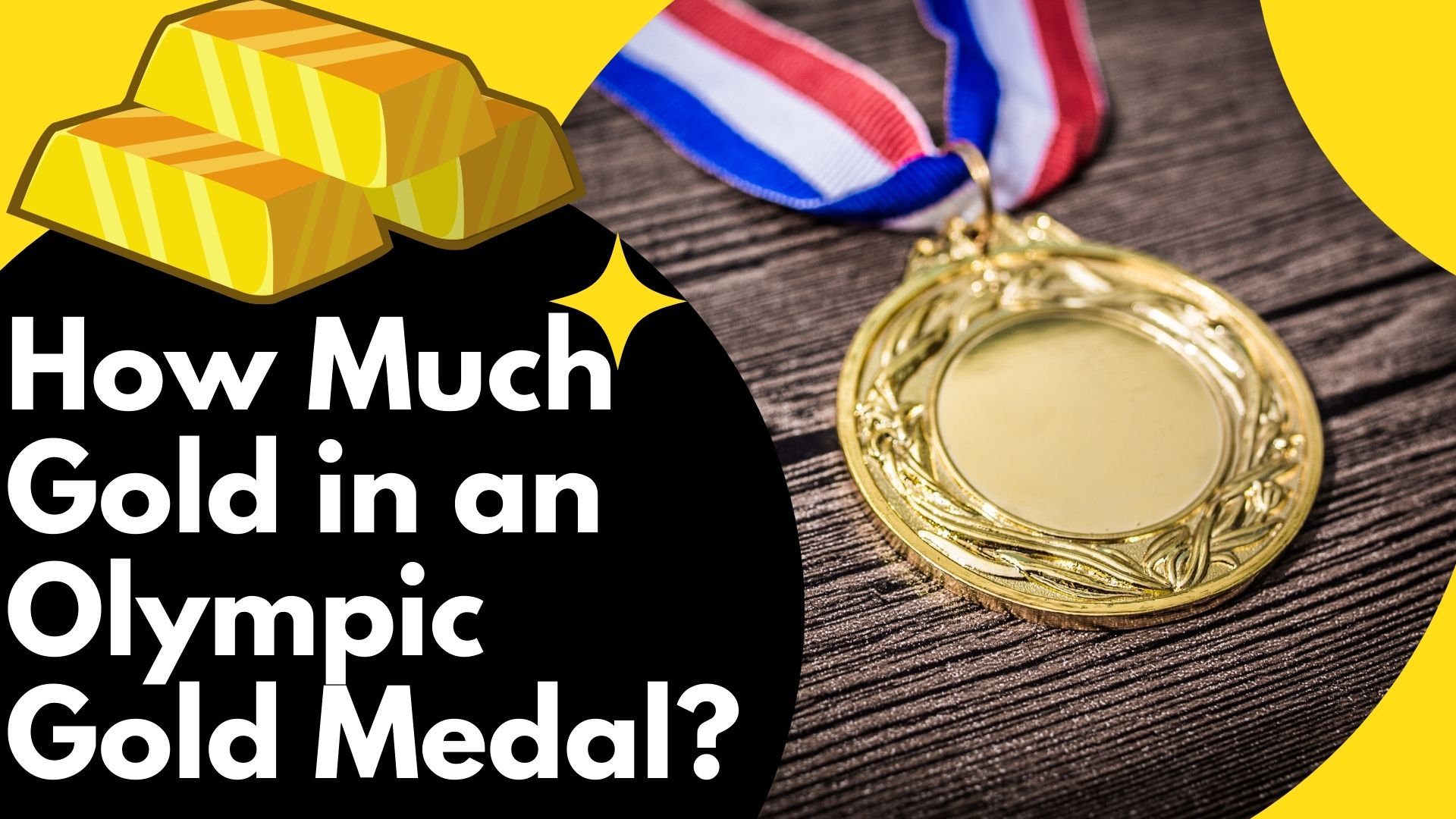The Olympics gold medal is one of the most prestigious sports medals in the world. While a lot of practice and effort goes into winning one, do you really know how much gold does an Olympic gold medal contains and how much is it worth?
In Tokyo, the gold medals won by the athletes greatly contain more silver than real gold, which makes up only about 6 grams of the total weight of 556 grams, according to the International Olympic Committee. Just 1.08% of the total weight of the medal.
Unlike the gold medal, the silver medal is made from pure silver and weighs around 550 grams, while the bronze medal weighs approximately 450 grams and is actually made from 95% copper and 5% zinc.
There was a time Olympic gold medals were made of pure gold. Solid gold medals were last awarded in 1912 in Stockholm, Sweden. The tradition was discontinued after World War I due to war-induced shortages.
Until 1896, the first-place holders were given silver medals and the runner-up, a copper medal. In place of Medals, Trophies and cups were awarded at the next summer Olympics, and it was only in 1904 that the first-place holder was rewarded with a gold medal.
This standard was adopted for the Olympic competition at the 1904 Summer Olympics. At the 1896 event, silver was awarded to winners and bronze to runners-up, while at 1900 other prizes were given, not medals.
Coming back to the actual worth of the Olympic medals
According to CNBC’s markets team, the 6 grams of gold and 550 grams of silver in the Tokyo Olympics’ first-place medal are worth $353 and $466, respectively just based on the material it contains.
However, it is not only the sum of gold and silver that makes up the price of the medal. After all, it’s an Olympic gold medal.
Each medal comes with a wood case and features the five Olympic rings, the official name of the games, and Nike, the Greek goddess of victory, on them, a requirement of the I.O.C.
Despite the uniform elements, there is some flexibility from hosts to add their own style to the designs.
Junichi Kawanishi, director of the Japan Sign Design Association, designed the medals for the 2020 Tokyo Olympics. Medals are made from material recycled from electronic devices donated by the Japanese public.
According to the official Olympics website, to produce the medals the Tokyo Organising Committee of the Olympic and Paralympic Games conducted the “Tokyo 2020 Medal Project” to collect small electronic devices such as used mobile phones from all over Japan.
As well as providing the materials, the public was also invited to submit ideas for medal designs before the Games. The competition was open to professional designers and design students, attracting more than 400 entries.
Around 5,000 medals were produced from the small electronic devices that Japanese people contributed. It made Tokyo the first Olympic and Paralympic host to ever involve citizens in the production of medals and the first to manufacture them using recycled, more sustainable metals.
“We hope that our project to recycle small consumer electronics and our efforts to contribute to an environmentally friendly, sustainable society will become a legacy of the Tokyo 2020 Games,” the organizers say on the official website.
Dozens of former Olympians have resorted to selling their medals over the years. Some have cited financial hardships, while others have said that they were motivated by raising money for charity.
Not all Olympic medals are engraved with the name of the sport for which they were awarded, which auctioneers say can reduce their value if it is unclear.
Not all medals fetch a lot of monetary rewards, for example, a silver medal in shooting from the 1900 Olympics in Paris recently sold for a mere $1,283.
Then there was a bronze medal from the 1956 Winter Games in Cortina d’Ampezzo, Italy, that fetched $3,750.
However, it was a first-place silver medal from the first modern Olympics in Athens in 1896. The first modern Olympics gave silver in place of gold for the first place in a competition. If you add that to the value it still only fetched a meager sum.
Jesse Owens priceless gold medal
The actual prices pale into insignificance next to the $1.46 million paid for Jesse Owens’ gold medal from the 1936 Berlin Olympics at auction in 2013.
This medal is considered one of the most important in Olympics history and is one of four that Owens, a Black American, won at the 1936 game, spoiling Adolf Hitler’s planned showcase of Aryan superiority.
“They’re still Olympic medals,” an anonymous collector said. “Third place is still pretty darned good. As a collector, you can start with bronze if you don’t have a lot of money.” If you do win a medal — be it gold, silver, or bronze — they’re pretty much priceless.



